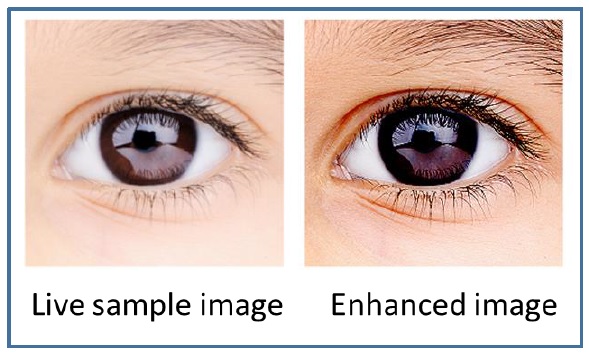
- Biometrics Home
- Biometrics Overview
- Biometric Modalities
- Physiological Modalities
- Behavioral Modalities
- Voice Recognition
- Multimodal Biometric Systems
- Biometric Modality Selection
- Biometric System Performance
- Pattern Recognition & Biometrics
- Signal Processing & Biometrics
- Biometrics & Image Processing
- Biometric System Security
- Biometrics Useful Resources
- Biometrics - Quick Guide
- Biometrics - Useful Resources
- Biometrics - Discussion
Biometrics & Image Processing
Images have a huge share in this era of information. In biometrics, image processing is required for identifying an individual whose biometric image is stored in the database previously. Faces, fingerprints, irises, etc., are image-based biometrics, which require image processing and pattern recognition techniques.
For an image based biometric system to work accurately, it needs to have the sample image of users biometric in a very clear and non-adulterated form.
Requirement of Image Processing in Biometrics
The image of users biometric is fed into the biometric system. The system is programmed to manipulate the image using equations, and then store the results of the computation for each pixel.
To selectively enhance certain fine features in the data and to remove certain noise, the digital data is subjected to various image processing operations.
Image processing methods can be grouped into three functional categories −
Image Restoration
Image restoration mainly includes −
- Reducing noise introduced in the image at the time of acquiring sample.
- Removing distortions appeared during enrollment of biometric.
Image smoothing reduces noise in the image. Smoothing is carried out by replacing each pixel by the average value with the neighboring pixel. The biometric system uses various filtering algorithms and noise reduction techniques such as Median Filtering, Adaptive Filtering, Statistical Histogram, Wavelet Transforms, etc.
Image Enhancement
Image enhancement techniques improve the visibility of any portion or feature of the image and suppress the information in other parts. It is done only after restoration is completed. It includes brightening, sharpening, adjusting contrast, etc., so that the image is usable for further processing.
Feature Extraction
Two types of features are extracted from image, namely −
General features − The features such as shape, texture, color, etc., which are used to describe content of the image.
Domain-specific features − They are application dependent features such as face, iris, fingerprint, etc. Gabor filters are used to extract features.

When the features are extracted from the image, you need to choose a suitable classifier. The widely used classifier Nearest Neighbor classifier, which compares the feature vector of the candidate image with the vector of the image stored in the database.
B-Splines are approximations applied to describe curve patterns in fingerprint biometric systems. The coefficients of B-Splines are used as features. In case of iris recognition system, the images of iris are decomposed using Discrete Wavelet Transform (DWT) and the DWT coefficients are then used as features.